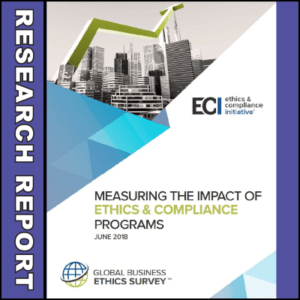Corporations have historically organized their ethics and compliance (E&C) programs around a priority to align with legal and regulatory expectations. Yet increasingly, organizations are going above and beyond historic regulatory risk mitigation.
With more and more organizations committing to higher quality programs, it begs the question: does it make a difference when a company dedicates more resources and heightens the priority of their E&C efforts?
To find an answer, we asked employees about the presence of an E&C program in their workplace. We also inquired about the quality of that program, if it existed. We then examined the impact and value of E&C in organizations with programs at varying degrees along the HQP implementation continuum.
The data shows that improving the quality of certain factors of an E&C program, at any stage of the program implementation process, has a positive impact to the organization.
Developing a successful E&C program is a journey. High quality program development takes time, planning and resources. However, if an organization does nothing more than implement a minimum standard E&C program, it can still reap benefits because employees are more likely to
perceive that they work in an organization with a stronger culture, and they are more willing to report wrongdoing when it occurs.
But the results of a minimum standard E&C program pale by comparison to organizations that have incorporated elements of HQPs. In these environments, the prevalence of favorable ethics program outcomes increases exponentially.
